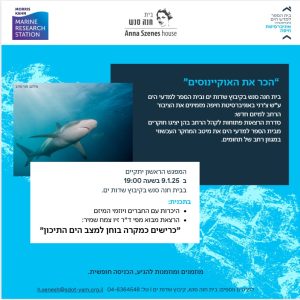Thesis
Our students Thesis works done with the Station assistance. Click on the button to open. HAGAI NATIV Developing a Rapid Fluorescence Imaging Tool for in-Situ Estimation of Coral Reef Health in Diverse Environments Click Here ORI GALILI Characterizing the Distribution of Tursiops truncatus and Delphinus delphis Along the Mediterranean Coastal Shelf of Israel Through Habitat Preference Modeling Click Here ITAI PELEG Monitoring Fish Pathogens in Eastern Mediterranean Fish by Applying…




